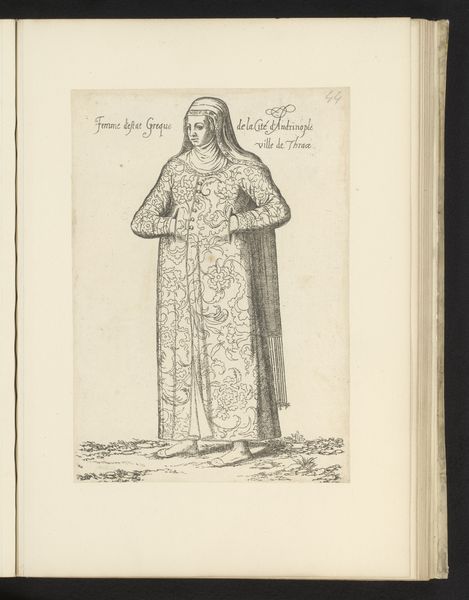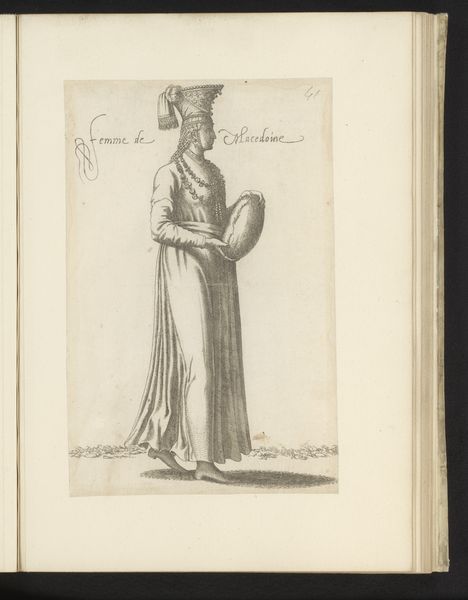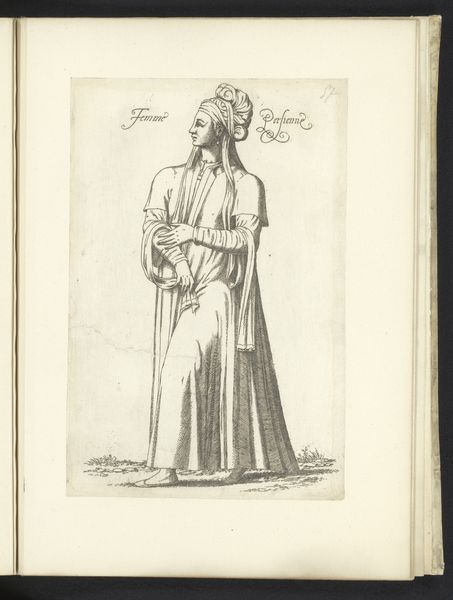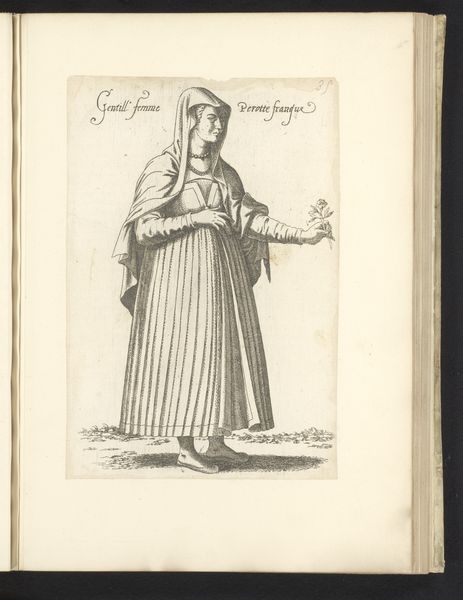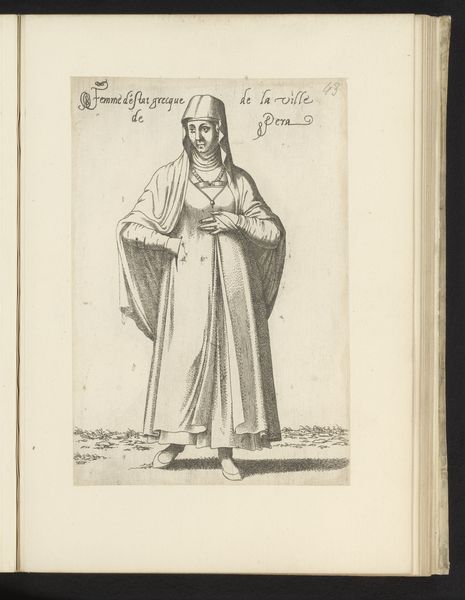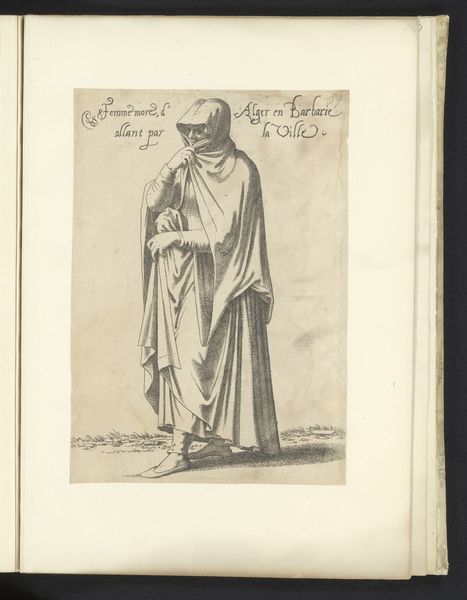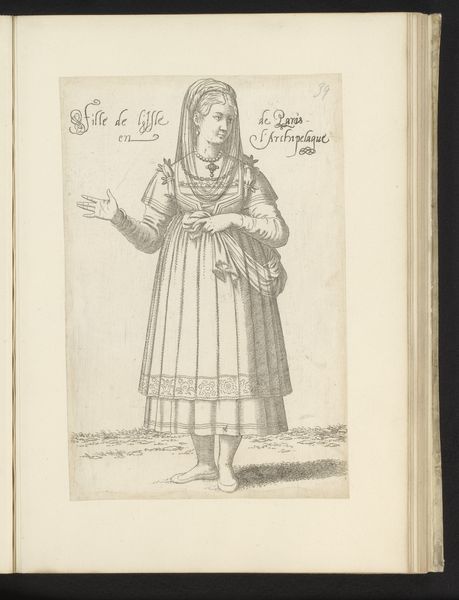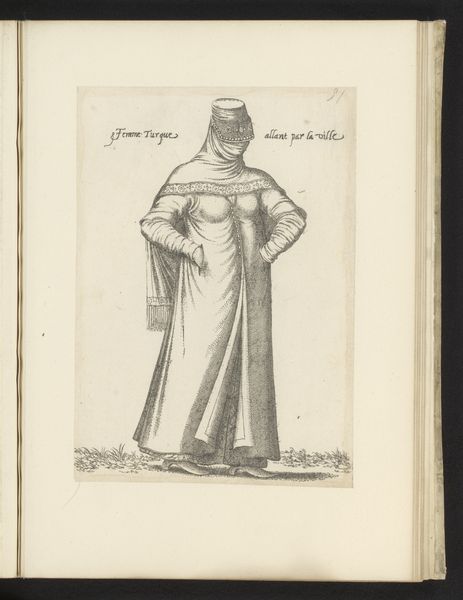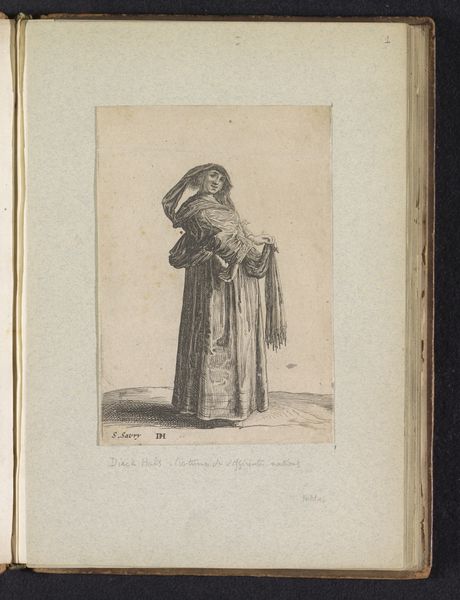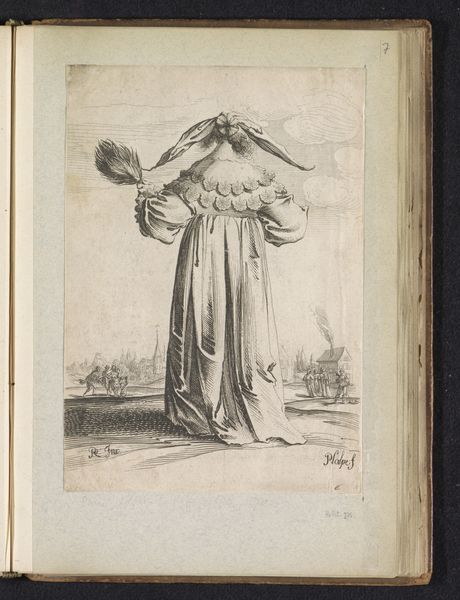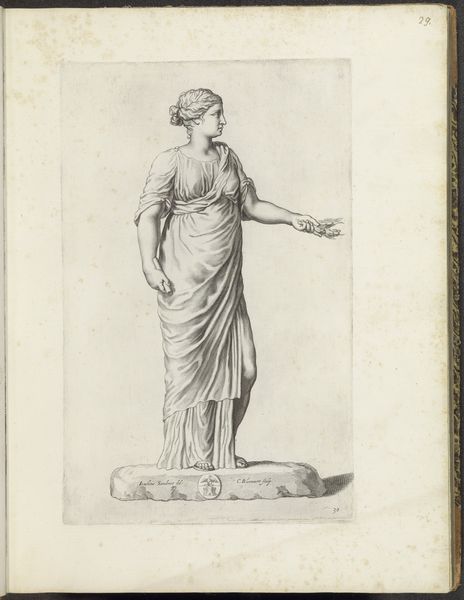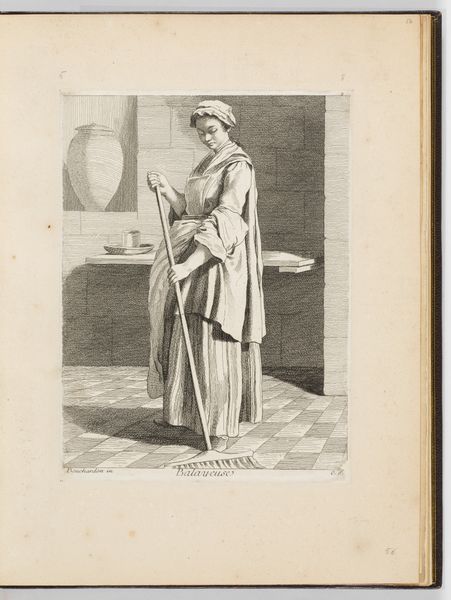
drawing, paper, ink, pen
#
portrait
#
drawing
#
mannerism
#
figuration
#
paper
#
ink
#
pen-ink sketch
#
pen
Dimensions: height 254 mm, width 177 mm
Copyright: Rijks Museum: Open Domain
Curator: Here we have "Vrouw afkomstig van Malta," or "Woman from Malta," a pen and ink drawing dating from 1555 to 1568, attributed to Léon Davent. What's your initial impression? Editor: A study in modesty, or perhaps an interpretation of it. Her gaze is soft, almost resigned, yet the lines of her garment hint at a concealed form beneath. The treatment is respectful but… clinical. Curator: Interesting. I see echoes of Mannerism here, particularly in the elongation of the figure and the stylized drapery. But beyond style, consider the symbolism of her attire. The head covering and modest clothing speak of religious or cultural constraints. Perhaps even a visual marker of status in Malta at that time? Editor: Yes, and perhaps Davent sought to capture a very specific tension, I mean, the Order of Malta during that era experienced high levels of political upheaval with competing demands from the papacy and secular Europe in ways that must have put women in unusual positions. Curator: Precisely. The pen and ink medium adds a layer of starkness that reflects that environment, as well as a perceived moral rigor of the subject's station and origin. Each stroke feels deliberate, underscoring the weight of societal expectations. Notice, the face remains soft and human despite it all. Editor: Right, and one can't overlook how drawings and prints served as important tools in disseminating images across Europe. What do you think viewers at the time read into a depiction like this? It likely perpetuated an orientalizing fantasy. Curator: Or provided a window into a world vastly different from their own, however filtered and shaped by the artist's perspective and the patron's wishes. Whether a true depiction or romanticized version, the drawing embodies a cultural dialogue, full of complex signs and counter-signs. Editor: A dialogue which persists through centuries, influencing perceptions and shaping our understanding of this “Maltese woman," her image laden with meaning long after its creation. What did you notice, for example, about this piece while doing your research? Curator: Her clothes do not conceal her curves! Which, considering the conservative approach of that time, does have to signal an artist, client or social intention that’s in excess of a simplistic social documentary. Well, food for thought. Thanks for this insightful discussion!
Comments
No comments
Be the first to comment and join the conversation on the ultimate creative platform.
